Last weekend my family took a day trip up to Stockbridge, MA to visit the Norman Rockwell Museum. I was the only one out of the four of us who hadn’t been before, and both the museum and charming town in the Berkshires quickly won me over. Each warrants its own post so today let’s dive into the paintings of Mr. Norman Percevel Rockwell.

Upon entering the museum, visitors are greeted by a Christmas tree and winter village featuring the actual buildings of downtown Stockbridge. A train circles the exhibit. I’m not sure if the tiny homes are swapped out seasonally or if this is just a holiday display.

Miniature details like cars and snowmen and people walking around add to the atmosphere of winter life in downtown Stockbridge. The building below is the Red Lion Inn, a historic building that has been in operation since 1773; we will visit there later today.

That vehicle below is delivering the Saturday Evening Post, which for decades featured a new painting every week by Mr. Rockwell. He was incredibly prolific during his lifetime, churning out paintings of an impressive caliber on such routine basis.

Now we enter the main part of the museum. It’s not very big, but many paintings lining the walls are immediately recognizable, like this one below of a boy visiting his doctor’s office titled “Before the Shot”:

The Norman Rockwell painting my family loves most is the one below depicting Main Street in Stockbridge. Each of these historic buildings still exists today in more or less the same shape — the town has taken great care to preserve their quaintness.

That’s the Stockbridge General Store on the right below. After our museum visit we’ll eat lunch there and sit at the front window.

Once a year around the first weekend in December, the town closes down Main Street and invites the same classic car models that populate this painting to recreate the iconic image. And guess what? It happened the week before our visit. Since my dad loves cars so much, he and my mom drove up to see it last weekend, too — I’ll share those photos tomorrow. It’s worth noting that Norman Rockwell started this painting in 1956 and then put it away for a few years before finishing it in 1967, so the car models vary by around a decade. Of course that doesn’t mean anything to me — I barely notice a car’s color, let alone any other details — but my dad gleefully explains the year and make of each car as we view the painting. I humor him and nod along.

That’s the Red Lion Inn depicted above. And that’s Norman Rockwell’s studio to the right of it, seen in greater detail below, just above his signature.

Shortly into our visit, a docent begins a guided tour of the museum for anyone who wants to join. Most people do but I hang back and take the opportunity to view and photograph the paintings unobstructed by fellow visitors (non-flash photos are allowed). Since the museum isn’t very large, I can still hear much of what the docent says as I walk around.

Among Rockwell’s famous paintings — and there are many worth noting — his Four Freedom canvases especially stand out. He painted them in 1943 depicting Freedom of Speech, Freedom of Worship, Freedom from Want, and Freedom from Fear. They refer to President Roosevelt’s 1941 State of the Union address in which he identified the four human rights that should be universally protected. This would become part of the charter of United Nations.

Freedom from Want, perhaps one of Rockwell’s best-known paintings:



And finally, Freedom from Fear:

Let’s take a closer look at this one — the parents are tucking their sons into bed, quite peacefully, as the father holds a newspaper with the partial headline visible: “Bombings” and “Horror.”

I wander some more, snapping photos of the paintings that stand out the most, as well as the corresponding descriptions in most cases. My favorites follow.
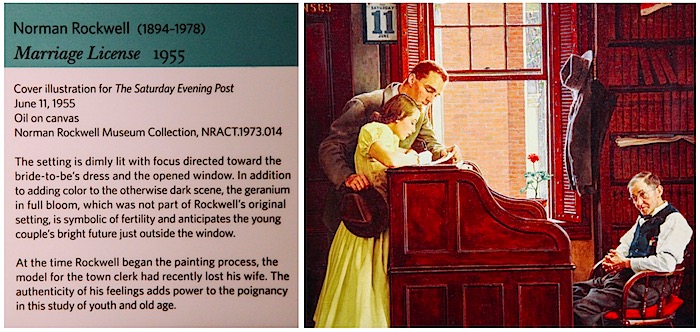
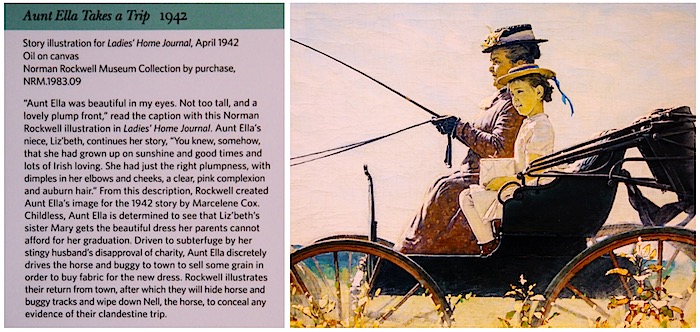
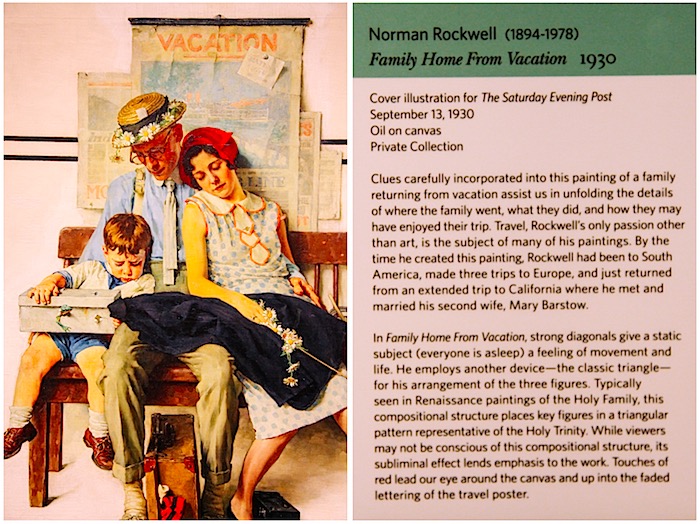
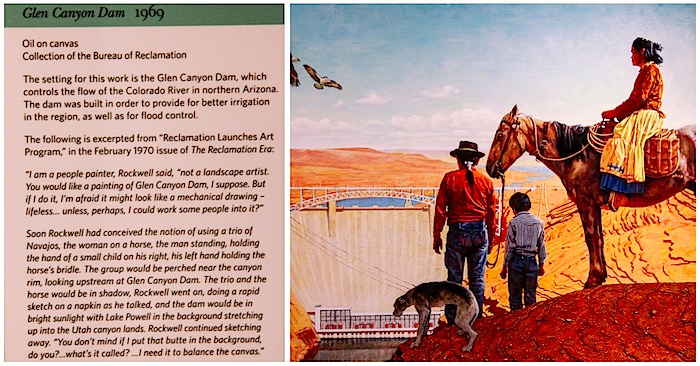
This was part of a series he painted for Sunmaid Raisins in the mid 1920s:

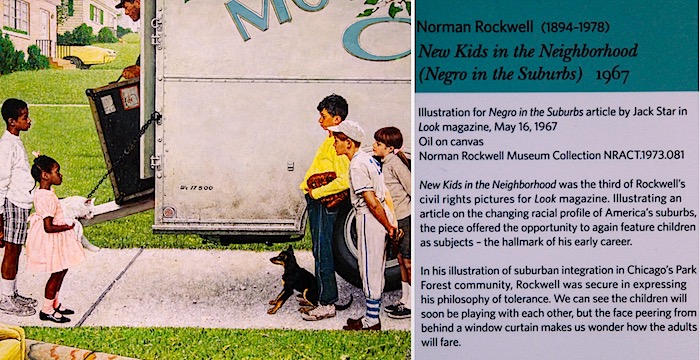
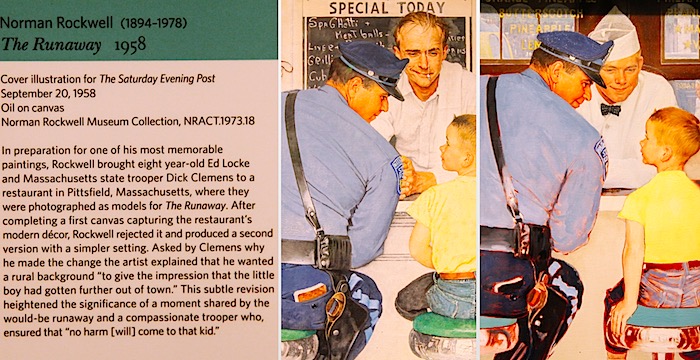
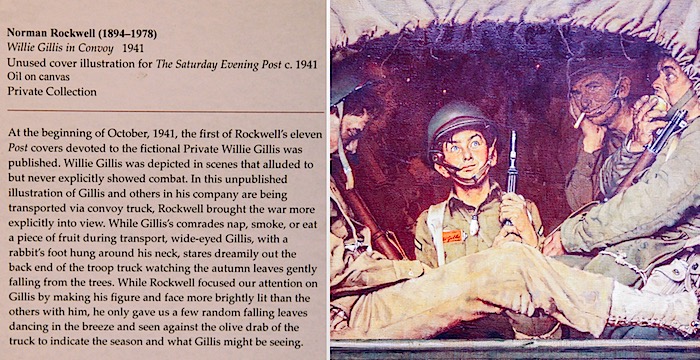

Below is Norman Rockwell and his third wife, Mary Punderson. All three of his wives were educators. (He divorced his first wife, and his second died of a heart attack. He had three children, all with his second wife, Mary Barstow.)

This is Rockwell’s Presidential Medal of Freedom:

There is currently an exhibit of Harvey Dunn’s work on display towards the back of the museum. He explored similar themes in his work, documenting daily life and American culture just like Rockwell did.

This next image is my favorite of the Harvey Dunn paintings — a plaque explains, “Before Rural Free Delivery (R.F.D.) was mandated in 1893, rural farm families had to travel to distant post offices or pay a private carrier to obtain their mail. In this painting, Dunn portrays a busy woman on a well-established farm who is taking time out to read the newspaper that arrived in her mail box along that rural route.” This painting is on display in a museum in South Dakota, the state where Dunn grew up.

This next painting is not by Harvey Dunn, but by artist John Ford Clymer; it’s called “Clearing the Snow.” The plaque reads, “Unique to John Clymer were his illustrations emphasizing the narrative aspects of landscape, as in this lively winter scene. ‘There was only one drawback about doing covers for The Post,’ he said. ‘They went everywhere in the country, and because I picked and painted actual places, there would be several hundred people who lived nearby who’d scrutinize every detail to try to find something wrong.’ … ‘The only time I had to make a correction on a cover was when I sent in a picture that had an automobile in the foreground. I had completed everything, lights, chrome, trim, spokes, but forgot to pain in the door handle.”

On the lower level of the museum is a children’s area called the Creativity Corner. It’s a great space and I imagine this would be a fun place to bring kids.



While I do not see the below painting presently on display in the museum, this copy sits in the children’s room — it’s another of Rockwell’s best-known works, called “The Problem We All Live With” depicting six-year-old Ruby Bridges being escorted to an all-white school in New Orleans by four deputy marshals in November 1961, near the start of desegregation. Racial slurs are written on the wall behind her, and the remnants of a thrown tomato lie on the ground. The painting was published as a centerfold in Look magazine in January 1964. Norman Rockwell had ended his contract with Saturday Evening Post the previous year in large part because that magazine was hesitant to express political themes, and Look offered him a space to do just that.
Worth noting: Obama asked for this original painting to be hung outside the Oval Office in 2011 following his meeting with Ruby Bridges.

The final area is a room full of every Saturday Evening Post cover that Rockwell painted. This is where the enormity of his body of work — hundreds and hundreds of paintings — hits me full force. I cannot get over just how much Norman Rockwell contributed during his lifetime, and the high standard to which every piece of his work measures up. He was a master storyteller.


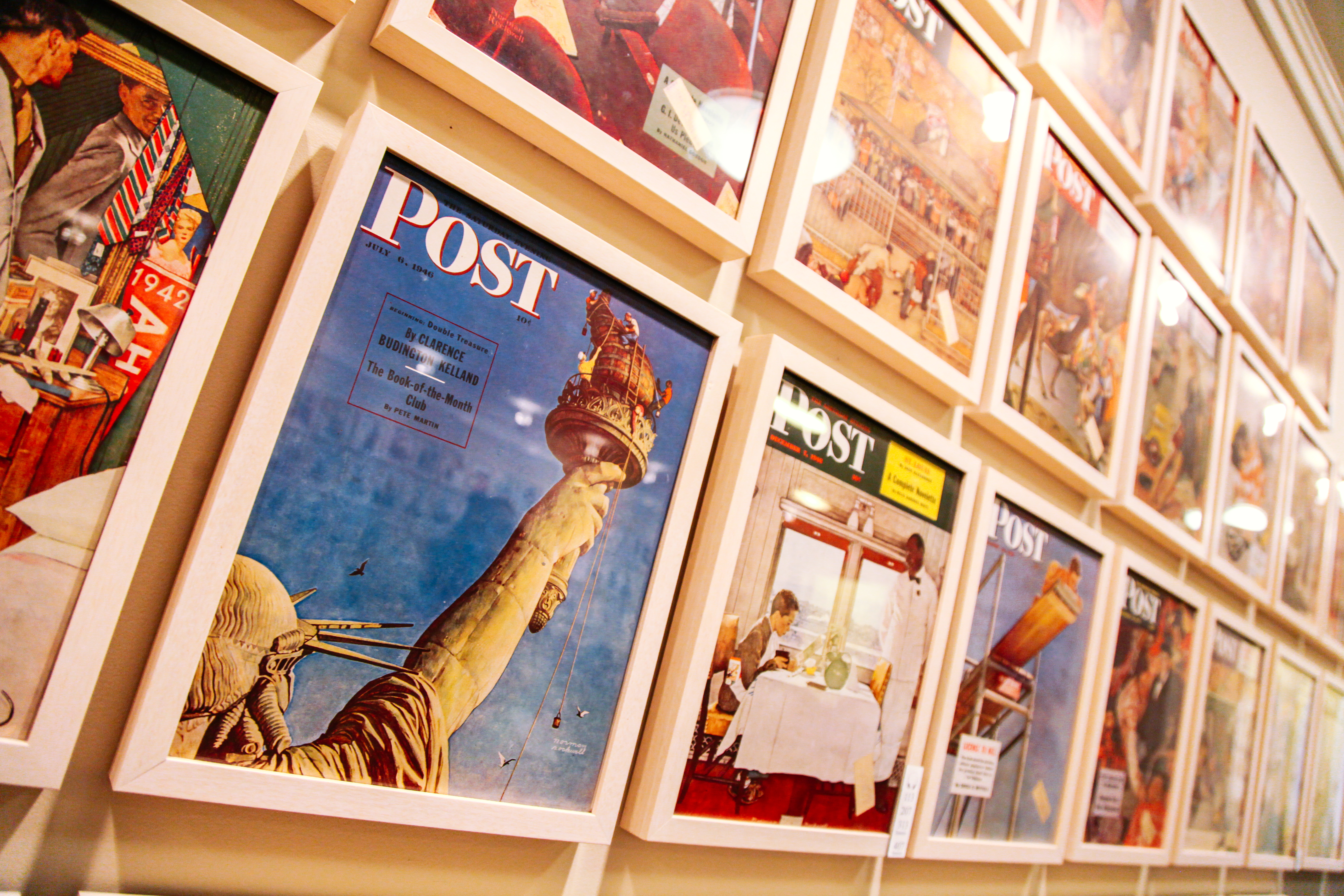 My sister points out this cover below. It’s especially clever, depicting an extended game of telephone in which the subject of gossip — the man in the hat at the bottom — becomes aware of the rumor mill and confronts the woman who started it.
My sister points out this cover below. It’s especially clever, depicting an extended game of telephone in which the subject of gossip — the man in the hat at the bottom — becomes aware of the rumor mill and confronts the woman who started it.

The museum grounds are quite lovely, too. Norman Rockwell’s studio is in the red barn below. It’s closed during the winter months but be sure to check it out if you visit in warmer weather.


I think it takes us about two hours to see everything. It’s very much worthwhile to visit, especially when paired with a visit to nearby downtown Stockbridge. More on that in tomorrow’s post… that would be the Tuesday Morning Post, thank you very much. (Couldn’t resist.)

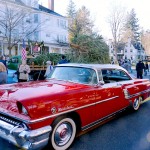
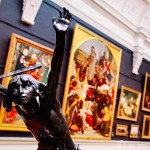
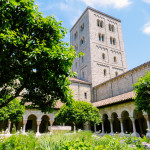

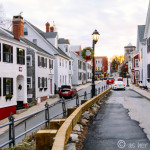

Thanking you for sharing your wonderful visit to the Rockwell Museum, and bringing back wonderful memories. I took my daughter and granddaughter there in 2012 on a lovely summer day, and all three generations totally enjoyed ourselves and the opportunity to see so many of Rockwell’s original paintings. My first Rockwell Museum experience was before the new building was built and it was located in a house just off Main Street. Looking forward to revisiting downtown Stockbridge with you tomorrow.
Marie, I am so pleased that this post brought back such fond memories for you! The Rockwell Museum and Stockbridge are such lovely places. I am glad that corner of New England is within driving distance of my parents so that I can return in the future!